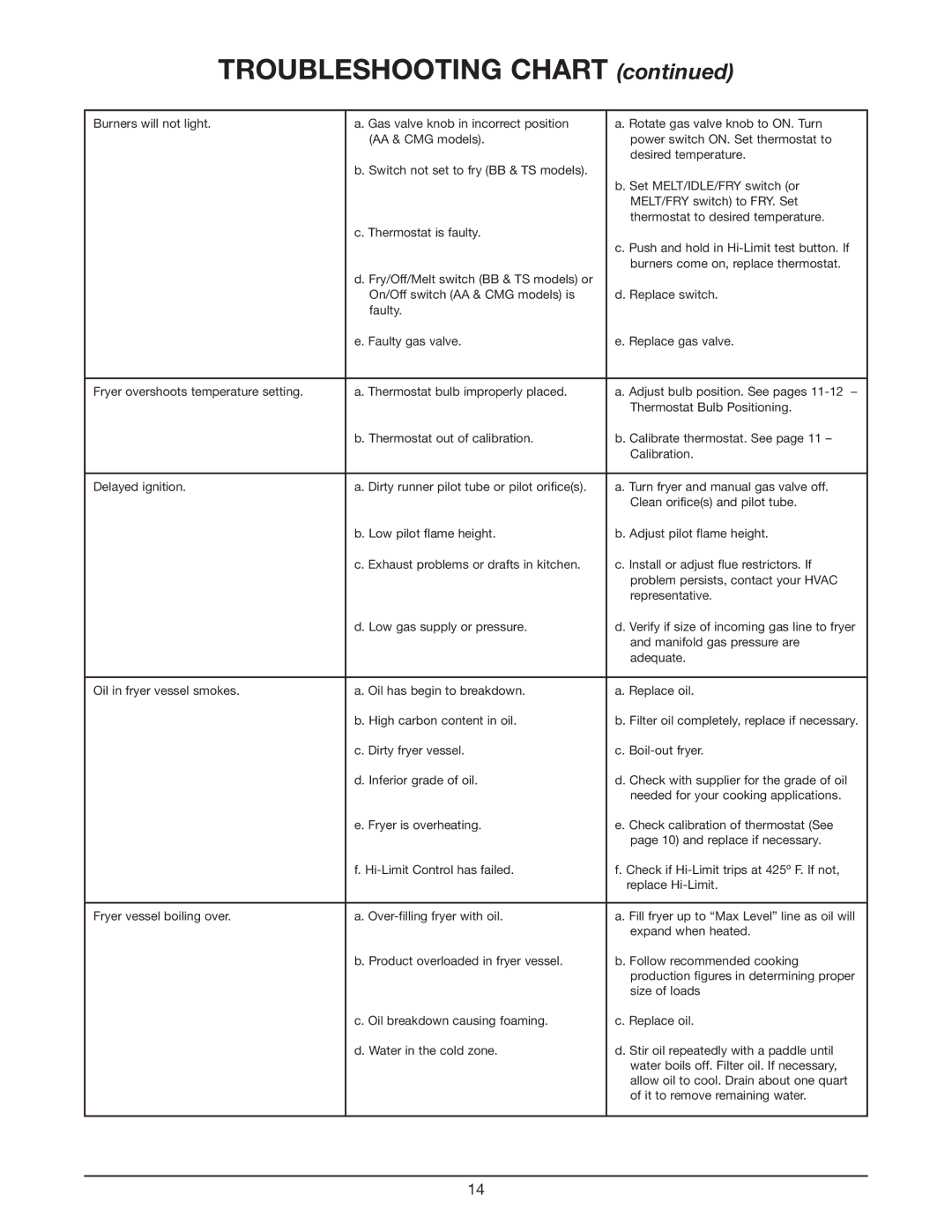Fryer specifications
Keating of Chicago is a prominent name in the commercial cooking equipment industry, particularly renowned for its innovative frying solutions. Their fryers are designed to meet the high demands of both foodservice businesses and culinary artisans, who require efficiency, reliability, and consistency in their frying operations.One of the standout features of Keating fryers is their unique design and construction. Many models are crafted from stainless steel, ensuring durability and resistance to corrosion, which is vital in fast-paced kitchen environments. The construction not only enhances the aesthetic appeal but also allows for easier cleaning and maintenance, crucial for compliance with health and safety regulations.
Keating fryers are equipped with advanced technologies that promote energy efficiency and superior frying performance. Many models utilize a patented, high-efficiency design that reduces oil consumption while maximizing cooking output. This is particularly beneficial for high-volume establishments, as it translates into cost savings and a reduced environmental impact.
Temperature control is another highlight of Keating fryers. Many units are equipped with precise digital thermostats that ensure accurate temperature settings and quick recovery times. This feature allows for the perfect frying conditions, leading to consistent and high-quality food products. The fryers often include filtration systems that prolong oil life and maintain oil quality, further enhancing the cooking process and flavor profiles of fried foods.
Safety considerations are paramount in the design of Keating fryers. They often come with built-in safety features such as automatic shut-off capabilities and cool-to-the-touch handles. These enhancements make them safer for kitchen staff and help prevent accidents related to hot oil splashes or fires.
Furthermore, Keating of Chicago offers a range of fryer configurations, including countertop and floor models, to accommodate various kitchen layouts and space constraints. Their versatility makes it easy for businesses to integrate them into their existing operations.
In conclusion, Keating of Chicago fryers represent a blend of innovative technology, robust construction, and user-centric design. With their focus on efficiency, safety, and quality, these fryers are an invaluable asset for commercial kitchens seeking to elevate their frying capabilities and deliver exceptional dishes to customers consistently. The combination of features and technologies demonstrates Keating’s commitment to excellence in the commercial cooking equipment industry.
